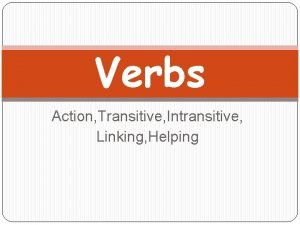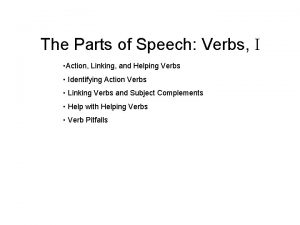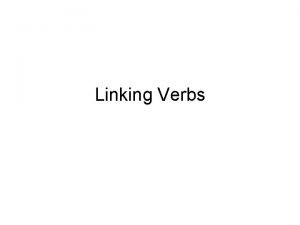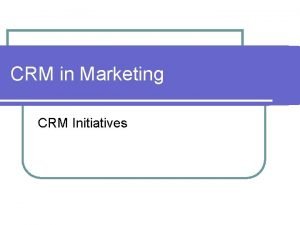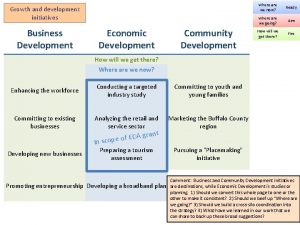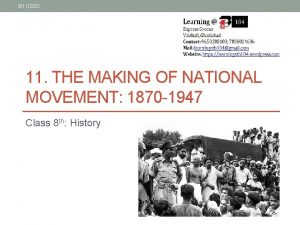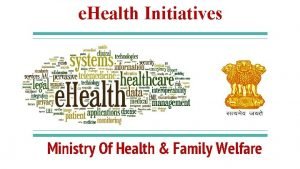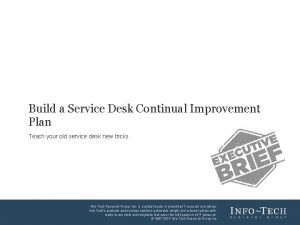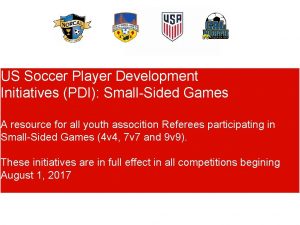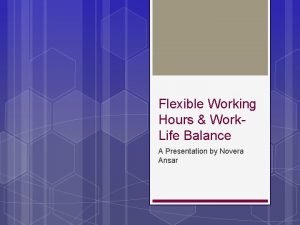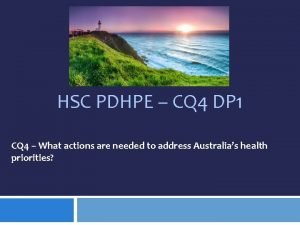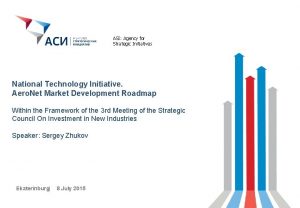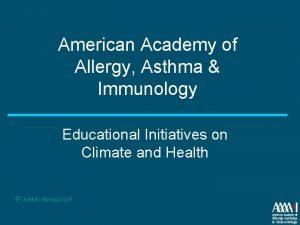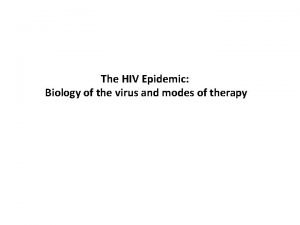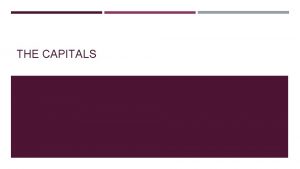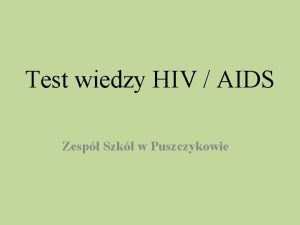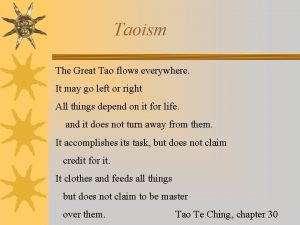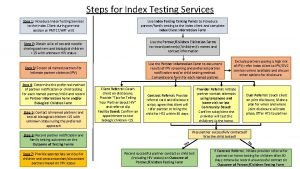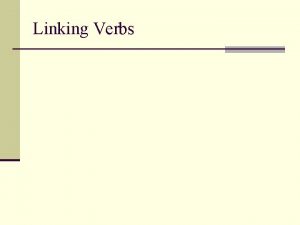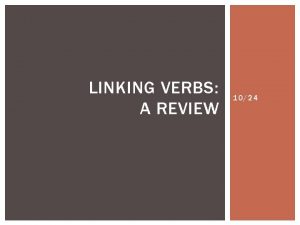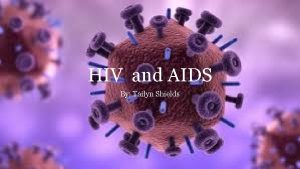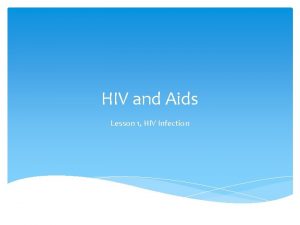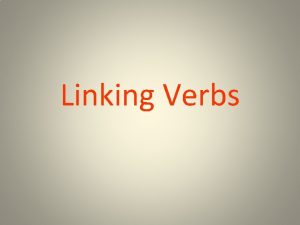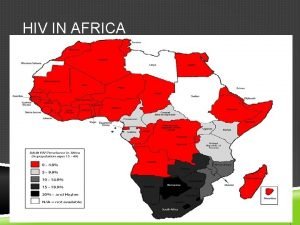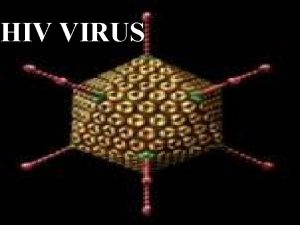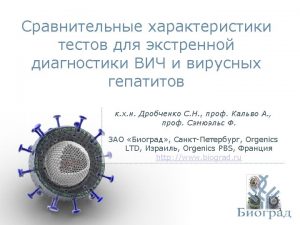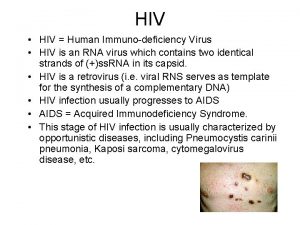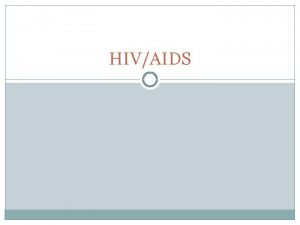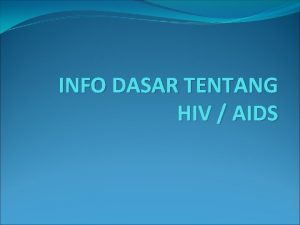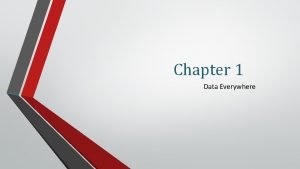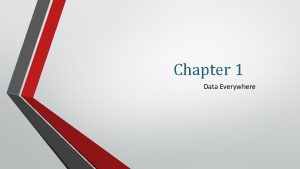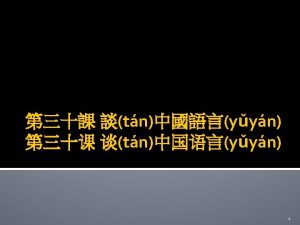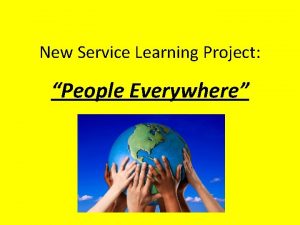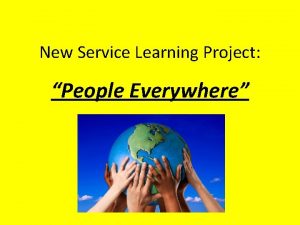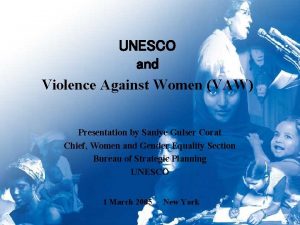Action Linking Initiatives on VAW and HIV Everywhere
![Action Linking Initiatives on VAW and HIV Everywhere (“ALIV[H]E”) Framework UNAIDS-commissioned consortium, with Salamander Action Linking Initiatives on VAW and HIV Everywhere (“ALIV[H]E”) Framework UNAIDS-commissioned consortium, with Salamander](https://slidetodoc.com/presentation_image_h2/c384f9d165e37773282a80ed7d63cbb7/image-1.jpg)
![ALIV[H]E Framework WHAT: An Implementation Framework To support NGOs to strengthen responses, and widen ALIV[H]E Framework WHAT: An Implementation Framework To support NGOs to strengthen responses, and widen](https://slidetodoc.com/presentation_image_h2/c384f9d165e37773282a80ed7d63cbb7/image-2.jpg)




![The ALIV[H]E Framework Presented in THREE PARTS: containing Seven Steps and Nine Actions The ALIV[H]E Framework Presented in THREE PARTS: containing Seven Steps and Nine Actions](https://slidetodoc.com/presentation_image_h2/c384f9d165e37773282a80ed7d63cbb7/image-7.jpg)
![The ALIV[H]E Framework Part 1: Introduction, Core Values and Policy Background The ALIV[H]E Framework Part 1: Introduction, Core Values and Policy Background](https://slidetodoc.com/presentation_image_h2/c384f9d165e37773282a80ed7d63cbb7/image-8.jpg)
![Core Values of the ALIV[H]E Framework ü Human Rights ü Sexual and Reproductive Health Core Values of the ALIV[H]E Framework ü Human Rights ü Sexual and Reproductive Health](https://slidetodoc.com/presentation_image_h2/c384f9d165e37773282a80ed7d63cbb7/image-9.jpg)


![The ALIV[H]E Quadrants of Change matrix Where Change Happens: The Quadrants of Change Matrix The ALIV[H]E Quadrants of Change matrix Where Change Happens: The Quadrants of Change Matrix](https://slidetodoc.com/presentation_image_h2/c384f9d165e37773282a80ed7d63cbb7/image-12.jpg)






![ALIV[H]E Framework • Links the WHO/UNAIDS “ 16 ideas” strategies wheel to the Gender ALIV[H]E Framework • Links the WHO/UNAIDS “ 16 ideas” strategies wheel to the Gender](https://slidetodoc.com/presentation_image_h2/c384f9d165e37773282a80ed7d63cbb7/image-19.jpg)
![ALIV[H]E Framework Policy Background • • SDGs – eg 3 and 5 INSPIRE package ALIV[H]E Framework Policy Background • • SDGs – eg 3 and 5 INSPIRE package](https://slidetodoc.com/presentation_image_h2/c384f9d165e37773282a80ed7d63cbb7/image-20.jpg)
![The ALIV[H]E Framework Part 2: (Steps 1 -5) Links, Strategies and Action The ALIV[H]E Framework Part 2: (Steps 1 -5) Links, Strategies and Action](https://slidetodoc.com/presentation_image_h2/c384f9d165e37773282a80ed7d63cbb7/image-21.jpg)
![The ALIV[H]E Framework Part 2 A: Clarifying the links between GBV and HIV Step The ALIV[H]E Framework Part 2 A: Clarifying the links between GBV and HIV Step](https://slidetodoc.com/presentation_image_h2/c384f9d165e37773282a80ed7d63cbb7/image-22.jpg)




![The ALIV[H]E Framework Part 3: (Steps 6 -7) How we can Measure our Change? The ALIV[H]E Framework Part 3: (Steps 6 -7) How we can Measure our Change?](https://slidetodoc.com/presentation_image_h2/c384f9d165e37773282a80ed7d63cbb7/image-27.jpg)
![The ALIV[H]E Framework Part 3 Introduction to Part 3: The ALIV[H]E Theory of Change The ALIV[H]E Framework Part 3 Introduction to Part 3: The ALIV[H]E Theory of Change](https://slidetodoc.com/presentation_image_h2/c384f9d165e37773282a80ed7d63cbb7/image-28.jpg)
![The ALIV[H]E Theory of Change The ALIV[H]E Theory of Change](https://slidetodoc.com/presentation_image_h2/c384f9d165e37773282a80ed7d63cbb7/image-29.jpg)





![ALIV[H]E Programme Coordinators • Johanna Kehler (ALN) • Luisa Orza and E. Tyler Crone ALIV[H]E Programme Coordinators • Johanna Kehler (ALN) • Luisa Orza and E. Tyler Crone](https://slidetodoc.com/presentation_image_h2/c384f9d165e37773282a80ed7d63cbb7/image-35.jpg)

- Slides: 36
![Action Linking Initiatives on VAW and HIV Everywhere ALIVHE Framework UNAIDScommissioned consortium with Salamander Action Linking Initiatives on VAW and HIV Everywhere (“ALIV[H]E”) Framework UNAIDS-commissioned consortium, with Salamander](https://slidetodoc.com/presentation_image_h2/c384f9d165e37773282a80ed7d63cbb7/image-1.jpg)
Action Linking Initiatives on VAW and HIV Everywhere (“ALIV[H]E”) Framework UNAIDS-commissioned consortium, with Salamander Trust, ATHENA Network, AIDS Legal Network, Project Empower and HEARD WEBINAR 9 November 2017
![ALIVHE Framework WHAT An Implementation Framework To support NGOs to strengthen responses and widen ALIV[H]E Framework WHAT: An Implementation Framework To support NGOs to strengthen responses, and widen](https://slidetodoc.com/presentation_image_h2/c384f9d165e37773282a80ed7d63cbb7/image-2.jpg)
ALIV[H]E Framework WHAT: An Implementation Framework To support NGOs to strengthen responses, and widen the evidence base on what works, to reduce VAW in the context of HIV WHY: Bridging the Gap: from what to how Despite the growing body of evidence on the linkages between HIV and VAW, there remains limited practical guidance on how to integrate and operationalise this evidence either programmatically or within national policies. There is also limited evidence on how to address VAW in all their diversities FOR WHOM: The framework aims to support NGOs and/or CBOs, working with community members in leading creative and dynamic programmes to address VAW in the context of HIV.

Implementing & Research Partners Implementing Partner Kenya • Better Poverty Eradication Organization (BPEO) India • Positive Women’s Network (PWN+) Malawi • Coalition of Women Living with HIV and AIDS (COWLHA) South Africa • Sex Workers Education & Advocacy Taskforce (SWEAT) South Sudan • Health Link South Sudan Zimbabwe • Her Zimbabwe • Musasa Project Research Partner Kenya • LVCT Health India • International Center for Research on Women (IRCW) Malawi • SAf. AIDS South Africa • AIDS Legal Network (ALN) South Sudan • UNAIDS Zimbabwe • Women and Law Southern Africa, Zimbabwe (WLSA)

Global Reference Group 1. Phelister Wambui Abdalla, Kenya Sex Workers Alliance (KESWA) 2. 3. 4. 5. 6. 7. 8. Elizabeth Akinyi Mokkonen, Community Fight Against GBV and HIV/AIDS (COFAS) Betty Babirye Kwagala, TASO Clara Banya, International Community of Women Living with HIV (ICW) Malawi Jennifer Gatsi-Mallet, Namibia Women’s Health Network (NWHN) Feli Lalrintluanga, Project Vihaan Care & Support Centre Steve Letsike, Access Chapter Two Inviolata Mbwavi, National Coordinator International Community of Women Living with HIV Kenya (ICW K) Ayu Oktariani, Youth LEAD Silvia Petretti, Positively UN, Positively UK Arushi Singh Martha Tholanah, , ICW Southern Africa Leigh Ann van der Merwe, Trans Feminists Collective, S. H. E 9. 10. 11. 12. 13.

REFRAMING the hierarchy of evidence: from a pyramid…. .

……to a Comprehensive Research Matrix
![The ALIVHE Framework Presented in THREE PARTS containing Seven Steps and Nine Actions The ALIV[H]E Framework Presented in THREE PARTS: containing Seven Steps and Nine Actions](https://slidetodoc.com/presentation_image_h2/c384f9d165e37773282a80ed7d63cbb7/image-7.jpg)
The ALIV[H]E Framework Presented in THREE PARTS: containing Seven Steps and Nine Actions
![The ALIVHE Framework Part 1 Introduction Core Values and Policy Background The ALIV[H]E Framework Part 1: Introduction, Core Values and Policy Background](https://slidetodoc.com/presentation_image_h2/c384f9d165e37773282a80ed7d63cbb7/image-8.jpg)
The ALIV[H]E Framework Part 1: Introduction, Core Values and Policy Background
![Core Values of the ALIVHE Framework ü Human Rights ü Sexual and Reproductive Health Core Values of the ALIV[H]E Framework ü Human Rights ü Sexual and Reproductive Health](https://slidetodoc.com/presentation_image_h2/c384f9d165e37773282a80ed7d63cbb7/image-9.jpg)
Core Values of the ALIV[H]E Framework ü Human Rights ü Sexual and Reproductive Health and Rights ü Gender Equity and Equality ü Respect for diversity ü Safety ü Participation ü Evidenceinformed

Based around 2 existing ‘wheels/circles’ WHO/UNAIDS (2013) “ 16 ideas” to address VAW Where Change Happens: The Quadrants of Change Matrix (Gender At Work) Quadrant 1: Internalised attitudes, values and practices: choice and agency Quadrant 2: Access to and control over public and private resources Quadrant 3: Changing socio-cultural norms Quadrant 4: Promoting and implementing laws and policies

The WHO 16 Ideas Wheel WHO/UNAIDS (2013) “ 16 ideas” to address VAW THE FOUR SECTIONS of the WHO WHEEL: Empowering women through integrated, multi-sectoral approaches – this relates to both quadrants 1 and 2 of the change matrix. Integrating VAW and HIV services – this relates mainly to quadrant 2. Transforming cultural and social norms related to gender – this relates mainly to quadrant 3. Promoting and implementing laws and policies related to VAW, gender equality and HIV – this relates to quadrant 4. Then each section presents 4 separate programming ideas, as shown shortly. For an interactive version of the WHO 16 Ideas wheel, see: http: //tinyurl. com/WHO 16 Ideas
![The ALIVHE Quadrants of Change matrix Where Change Happens The Quadrants of Change Matrix The ALIV[H]E Quadrants of Change matrix Where Change Happens: The Quadrants of Change Matrix](https://slidetodoc.com/presentation_image_h2/c384f9d165e37773282a80ed7d63cbb7/image-12.jpg)
The ALIV[H]E Quadrants of Change matrix Where Change Happens: The Quadrants of Change Matrix (Gender At Work) Quadrant 1: Internalised attitudes, values and practices: choice and agency Quadrant 2: Access to and control over public and private resources Quadrant 3: Changing socio-cultural norms Quadrant 4: Promoting and implementing laws and policies

Based around 2 existing ‘wheels/circles’ WHO/UNAIDS (2013) “ 16 ideas” to address VAW Where Change Happens: The Quadrants of Change Matrix (Gender At Work) Quadrant 1: Internalised attitudes, values and practices: choice and agency Quadrant 2: Access to and control over public and private resources Quadrant 3: Changing socio-cultural norms Quadrant 4: Promoting and implementing laws and policies





To see an animated version of the quadrants of change matrix, see: http: //tinyurl. com/genderchangematrix (scroll down the page)
![ALIVHE Framework Links the WHOUNAIDS 16 ideas strategies wheel to the Gender ALIV[H]E Framework • Links the WHO/UNAIDS “ 16 ideas” strategies wheel to the Gender](https://slidetodoc.com/presentation_image_h2/c384f9d165e37773282a80ed7d63cbb7/image-19.jpg)
ALIV[H]E Framework • Links the WHO/UNAIDS “ 16 ideas” strategies wheel to the Gender at Work “quadrants of change” matrix • Seeks to provide a core set of indicators aligned to the quadrants and show they connect to global indicators and goals, e. g. SDGs • We have blended these 2 images in our work.
![ALIVHE Framework Policy Background SDGs eg 3 and 5 INSPIRE package ALIV[H]E Framework Policy Background • • SDGs – eg 3 and 5 INSPIRE package](https://slidetodoc.com/presentation_image_h2/c384f9d165e37773282a80ed7d63cbb7/image-20.jpg)
ALIV[H]E Framework Policy Background • • SDGs – eg 3 and 5 INSPIRE package to end violence against children 2016 WHA Global Plan of Action on VAWG and children 2016 Political Declaration on Ending HIV and AIDS UNAIDS 2016 -2021 Strategy DREAMS WHO 2014 Clinical Handbook on IPV and sexual violence WHO Guideline on SRH&R of women living with HIV
![The ALIVHE Framework Part 2 Steps 1 5 Links Strategies and Action The ALIV[H]E Framework Part 2: (Steps 1 -5) Links, Strategies and Action](https://slidetodoc.com/presentation_image_h2/c384f9d165e37773282a80ed7d63cbb7/image-21.jpg)
The ALIV[H]E Framework Part 2: (Steps 1 -5) Links, Strategies and Action
![The ALIVHE Framework Part 2 A Clarifying the links between GBV and HIV Step The ALIV[H]E Framework Part 2 A: Clarifying the links between GBV and HIV Step](https://slidetodoc.com/presentation_image_h2/c384f9d165e37773282a80ed7d63cbb7/image-22.jpg)
The ALIV[H]E Framework Part 2 A: Clarifying the links between GBV and HIV Step 1: Understanding your context and the links between VAW and HIV B: Providing strategies that respond to intersections between GBV & HIV Step 2: Violence against women and girls is preventable: the evidence on integrating VAW and HIV Step 3: What can you do differently to strengthen your response to the GBV/HIV intersection? C: Enacting core values through the implementation of programmes Step 4: Enacting ALIV[H]E values in our work Step 5: Expanding and strengthening the evidence base

Pathway 1: Gender inequality as a common determinant of HIV and violence against women • Large studies of men globally, including in Asia-Pacific, sub-Saharan Africa, and Latin America all highlight that men who hold gender inequitable attitudes are: – More likely to perpetrate intimate partner violence; – More likely to perpetrate non-partner rape; – More likely to engage in transactional sex; – Less likely to use condoms. • Global research has emphasised that if VAW is acceptable within a community, women are much more likely to experience intimate partner violence. Community acceptability of VAW also makes programming much more challenging. • The criminalisation of sex work increases the vulnerability of sex workers to VAW and HIV. This includes state violence in the form of harassment and arrest by police, including for carrying condoms. One study estimated that if sex work were decriminalised between 33% and 46% of all new HIVacquisitions in sex workers could be averted in the next 10 years.

Pathway 2: Violence against women as an indirect factor for increased HIV risk, and a barrier to uptake of HIV services, poor treatment adherence and response • Women who experience IPV have higher levels of mental health issues, including depression and anxiety, higher use of alcohol and less control over their sexual decisions. This increases the likelihood by up to 55% that they will acquire HIV. • A systematic review showed women who experienced IPV were less likely to adhere to ART, and the impact of IPV on adherence was greater than that caused by other factors including depression, substance use, stigma and financial constraints. • More widely, research has shown women struggle to access and benefit from services – including ART - because of violence, or the fear of violence. PATHWAY 2. Based on research from South Africa and Uganda.

Pathway 3: Sexual violence as a direct risk factor for HIV transmission • Sexual violence can be experienced by all women and girls. • Studies show disabled children and adults are at greater risk for experiencing physical and sexual violence than their peers. When combined with their limited access to health services – including postviolence care - people with disabilities are at high risk of acquiring HIV. • In humanitarian crises and post-crisis settings there are often higher levels of sexual violence, with inadequate access to legal forms of protection and restitution, and limited access to post-rape health services. The Inter. Agency Standing Committee has issued guidelines on strengthening the response to VAW and sexual violence in humanitarian settings. • Greentree II (2016) suggests that even in conflict settings, IPV is more common than non-partner sexual violence, and that at the population level non-partner sexual violence is less of an HIV-risk factor than normally considered (c. f. individual level) PATHWAY 3: Even in conflict settings, other forms of violence, particularly IPV, remain incredibly high. The Greentree II report suggests we need to look much more carefully at the relationship between conflict and post-conflict settings and what is happening there.

Pathway 4: Violence against women as an outcome of HIV status and disclosure • When women learn of, and subsequently disclose, their HIV status they risk experiencing a range of forms of violence. A study of 289 women living with HIV in Nigeria found that those who had disclosed their HIV-status to their partner were 3 times more likely to have experienced physical and emotional violence following diagnosis than those who had not. • The forced and coerced sterilisation of women living with HIV (a form of state institutional violence) has been documented globally. • The criminalisation of HIV exposure and transmission puts women living with HIV at particular risk of blame, violence and legal sanction, because in many settings women typically learn their HIV status before men. PATHWAY 4. This slide results is also confirmed by Orza et al 2015 JIAS on GBV and Orza et al 2015 JIAS on mental health.
![The ALIVHE Framework Part 3 Steps 6 7 How we can Measure our Change The ALIV[H]E Framework Part 3: (Steps 6 -7) How we can Measure our Change?](https://slidetodoc.com/presentation_image_h2/c384f9d165e37773282a80ed7d63cbb7/image-27.jpg)
The ALIV[H]E Framework Part 3: (Steps 6 -7) How we can Measure our Change?
![The ALIVHE Framework Part 3 Introduction to Part 3 The ALIVHE Theory of Change The ALIV[H]E Framework Part 3 Introduction to Part 3: The ALIV[H]E Theory of Change](https://slidetodoc.com/presentation_image_h2/c384f9d165e37773282a80ed7d63cbb7/image-28.jpg)
The ALIV[H]E Framework Part 3 Introduction to Part 3: The ALIV[H]E Theory of Change D: Measuring Change Step 6: Establishing a Monitoring and Evaluation Framework Step 7: Developing an M&E plan (approaches, data collection methods, and activities)
![The ALIVHE Theory of Change The ALIV[H]E Theory of Change](https://slidetodoc.com/presentation_image_h2/c384f9d165e37773282a80ed7d63cbb7/image-29.jpg)
The ALIV[H]E Theory of Change

Results in the change matrix • Quadrant 1: Internalized gender equitable attitudes, values and practices • Quadrant 2: Increased access to and control over public and private resources • Quadrant 3: Gender equitable socio-cultural norms and practices • Quadrant 4: Laws, policies and resource allocations that respect, protect and fulfil women’s human rights


SMART and SPICED? SMART SPICED Specific Measurable Achievable Realistic Timebound Subjective Participatory Interpretable Cross-checkable Evaluable and Empowering Diverse and Disagreggated

Different viewpoints…… What can you see in each of these pictures? Each image contains at least 2 quite different images.

Older Women’s Group, Buwenda, 16 months after the workshop, Dec 1995
![ALIVHE Programme Coordinators Johanna Kehler ALN Luisa Orza and E Tyler Crone ALIV[H]E Programme Coordinators • Johanna Kehler (ALN) • Luisa Orza and E. Tyler Crone](https://slidetodoc.com/presentation_image_h2/c384f9d165e37773282a80ed7d63cbb7/image-35.jpg)
ALIV[H]E Programme Coordinators • Johanna Kehler (ALN) • Luisa Orza and E. Tyler Crone (ATHENA Network) • Andrew Gibbs, Jill Hanass-Hancock, Samantha Willan (HEARD, University of Kwa. Zulu-Natal) • Nolwazi Ntini, Laura Washington (Project Empower) • Sophie Dilmitis, Laura Pulteney, Alice Welbourn (Salamander Trust) • Jane Shepherd (Designer) • Hege Wagan, Aurelie Andriamialison (UNAIDS)

COMMENTS FROM GLOBAL REFERENCE GROUP MEMBERS, RESEARCH ORGANISATIONS, IMPLEMENTERS…. .
 Logos everywhere
Logos everywhere Dynamic linking vs static linking
Dynamic linking vs static linking Lesson 5 verbs action (transitive/intransitive) answer key
Lesson 5 verbs action (transitive/intransitive) answer key Action verbs and linking verbs
Action verbs and linking verbs Is felt a linking verb
Is felt a linking verb Action linking helping verbs
Action linking helping verbs Linking verbs examples
Linking verbs examples Delvic sanitation initiatives
Delvic sanitation initiatives Digital initiatives in higher education
Digital initiatives in higher education Crm marketing initiatives
Crm marketing initiatives Johannes volkelt theory explained
Johannes volkelt theory explained Business development initiatives
Business development initiatives People's initiatives
People's initiatives Nasa access management system (nams)
Nasa access management system (nams) Health initiatives
Health initiatives Service improvement plan for service desk
Service improvement plan for service desk Us soccer player development initiatives
Us soccer player development initiatives Global health initiatives meaning
Global health initiatives meaning Flexible working presentation
Flexible working presentation Faa strategic plan
Faa strategic plan Oahpi
Oahpi Ottawa charter pdhpe
Ottawa charter pdhpe Agency for strategic initiatives
Agency for strategic initiatives American academy of allergy asthma and immunology 2018
American academy of allergy asthma and immunology 2018 Love relationship and friendship goes everywhere
Love relationship and friendship goes everywhere A bacterial std that usually affects mucous membranes
A bacterial std that usually affects mucous membranes Chapter 24 sexually transmitted diseases and hiv/aids
Chapter 24 sexually transmitted diseases and hiv/aids Function of personnel management
Function of personnel management Be present at our table lord be here and everywhere adored
Be present at our table lord be here and everywhere adored Hindu beliefs about god
Hindu beliefs about god Data data everywhere and not a thought to think
Data data everywhere and not a thought to think Quang trung
Quang trung Where did hiv come from
Where did hiv come from Ive been everywhere pei
Ive been everywhere pei Test wiedzy o hiv i aids
Test wiedzy o hiv i aids The great tao
The great tao Steps of index testing
Steps of index testing


